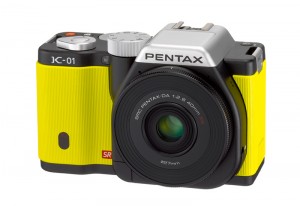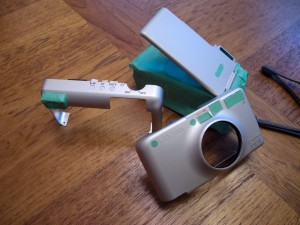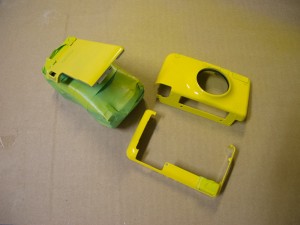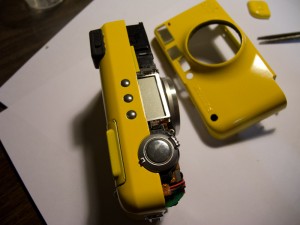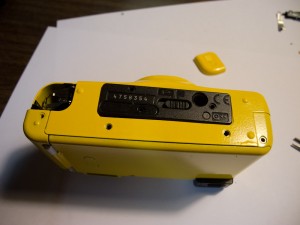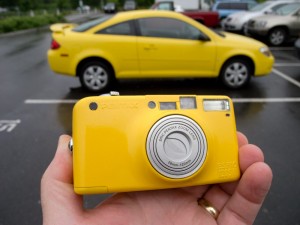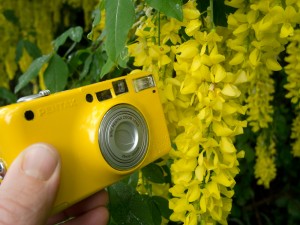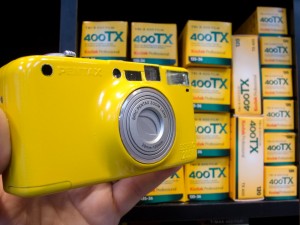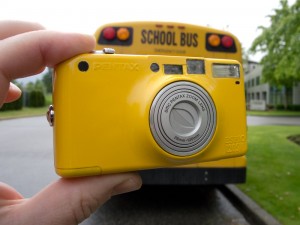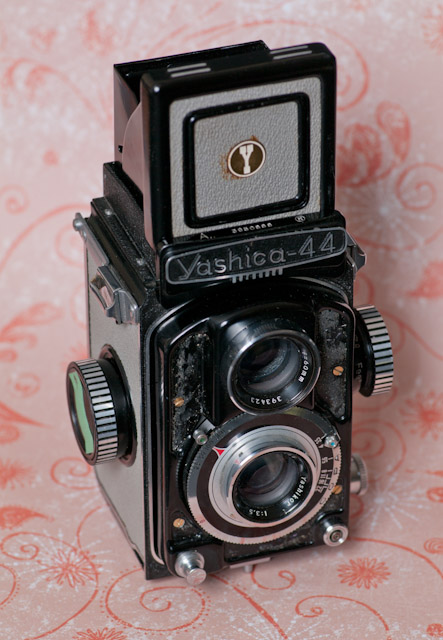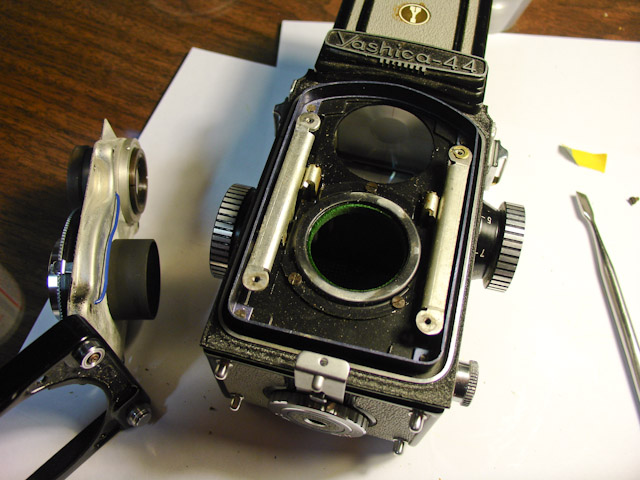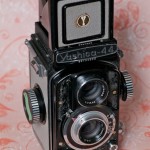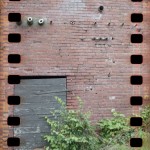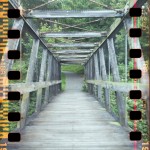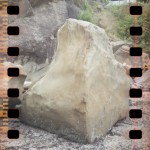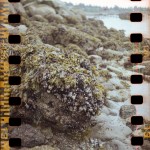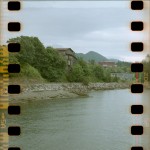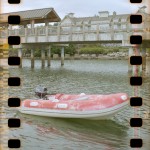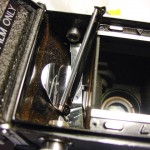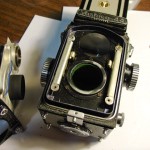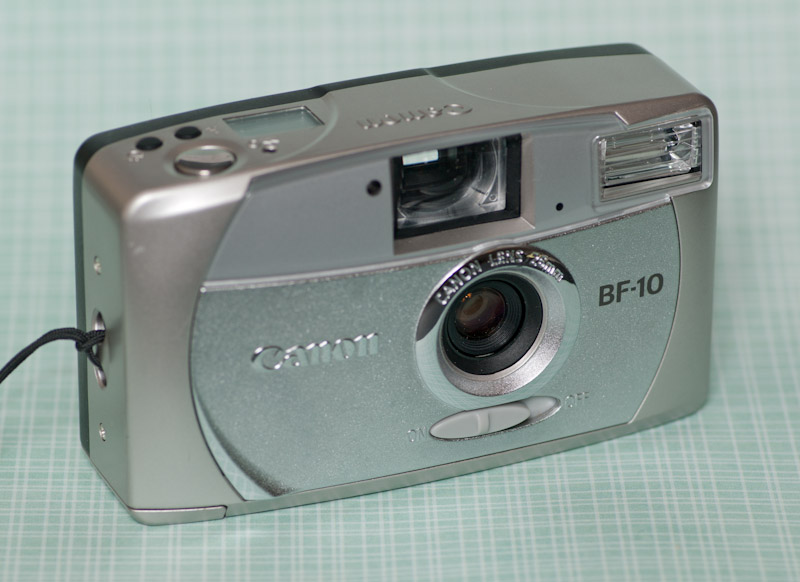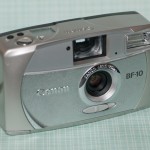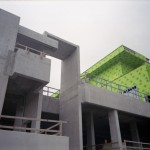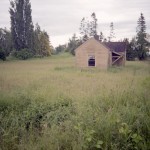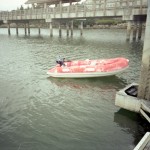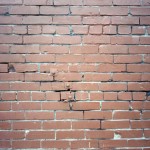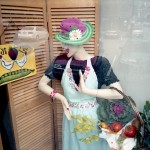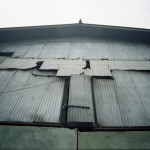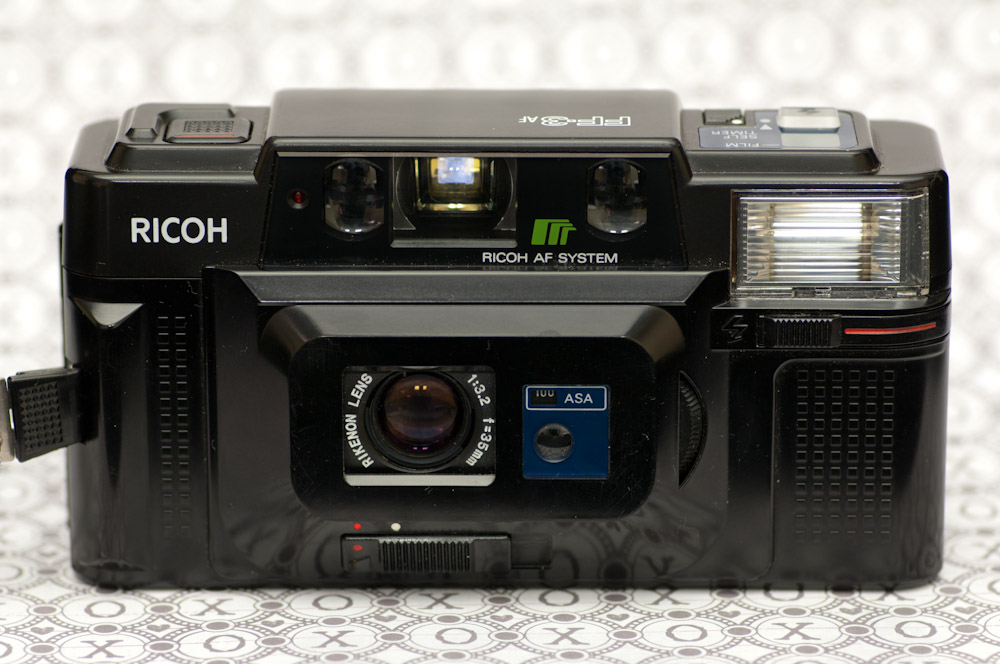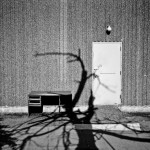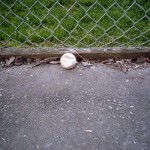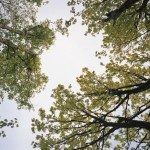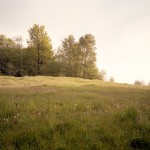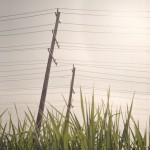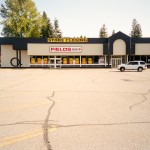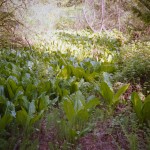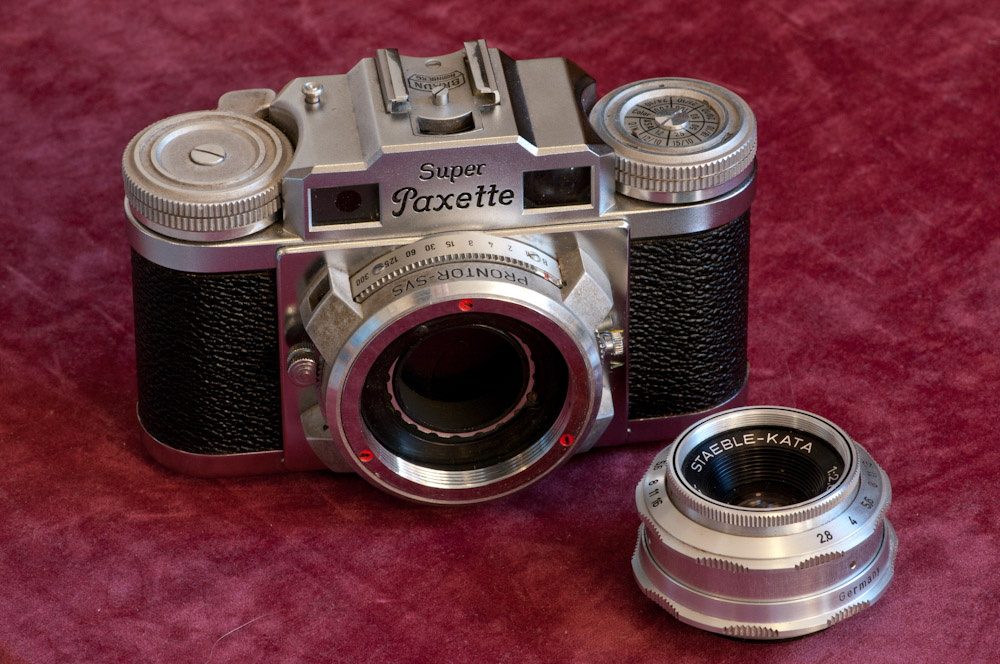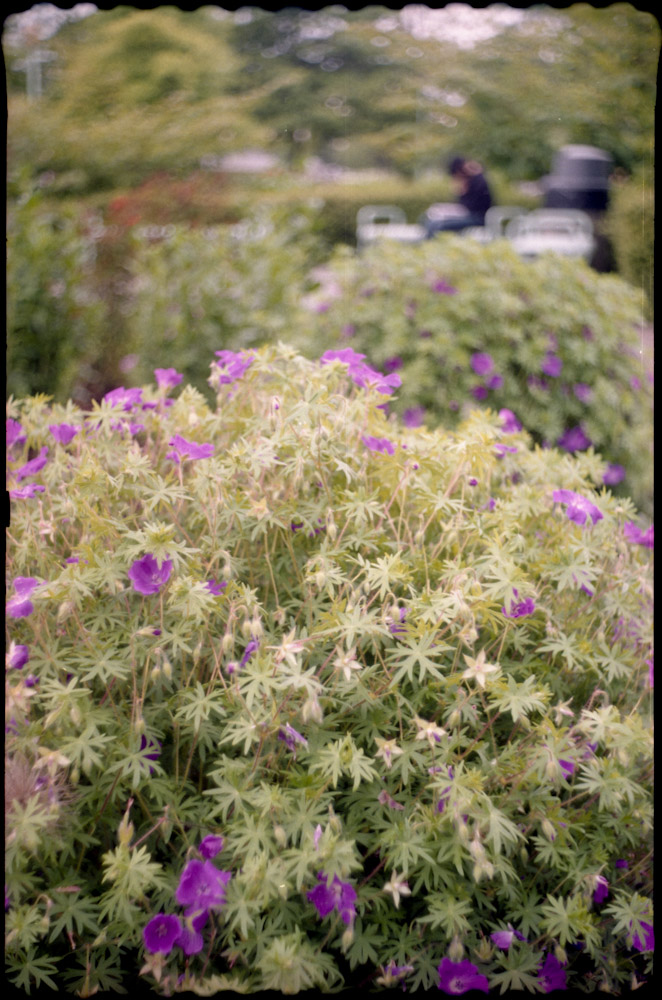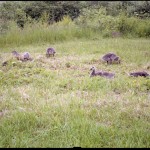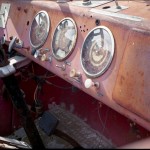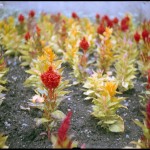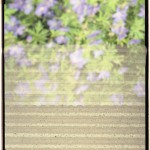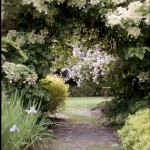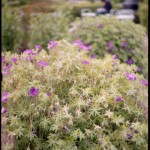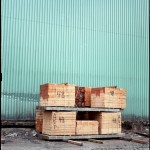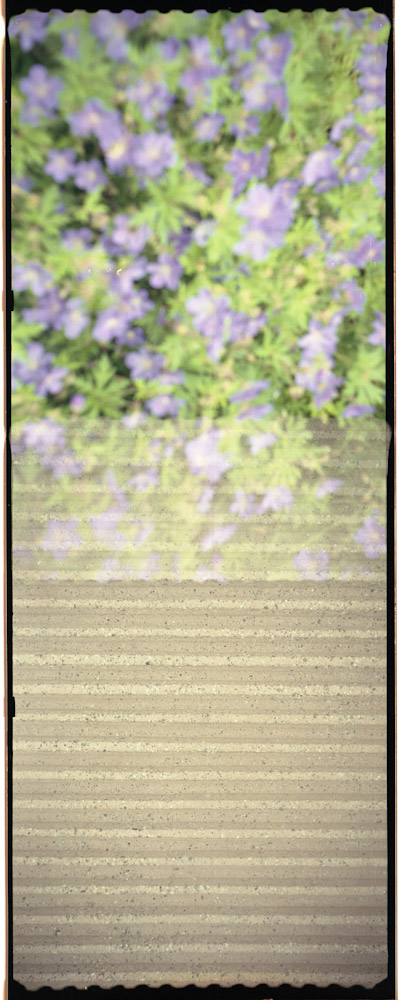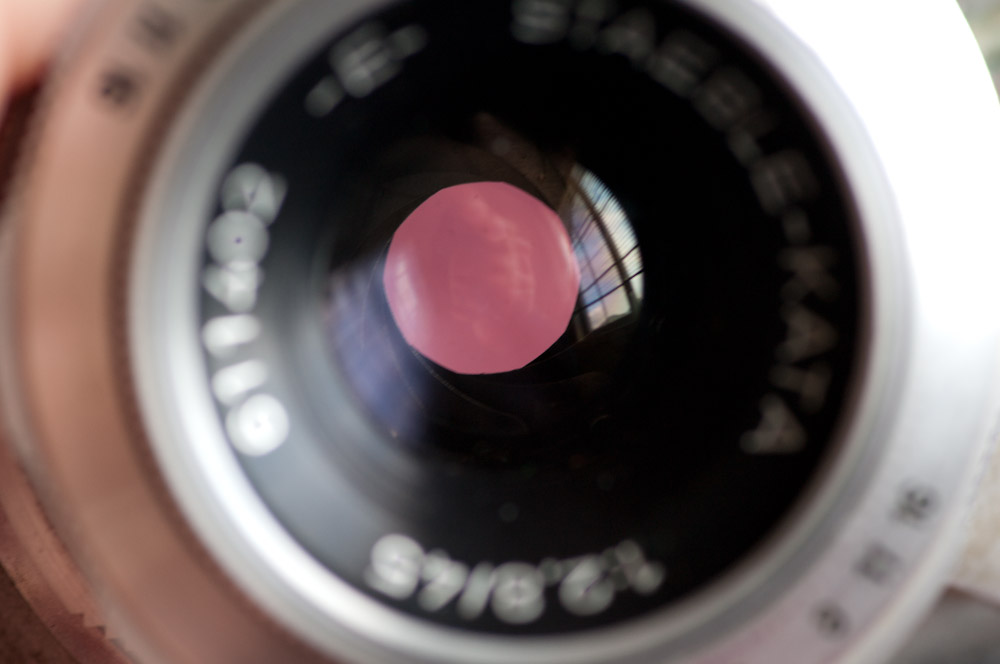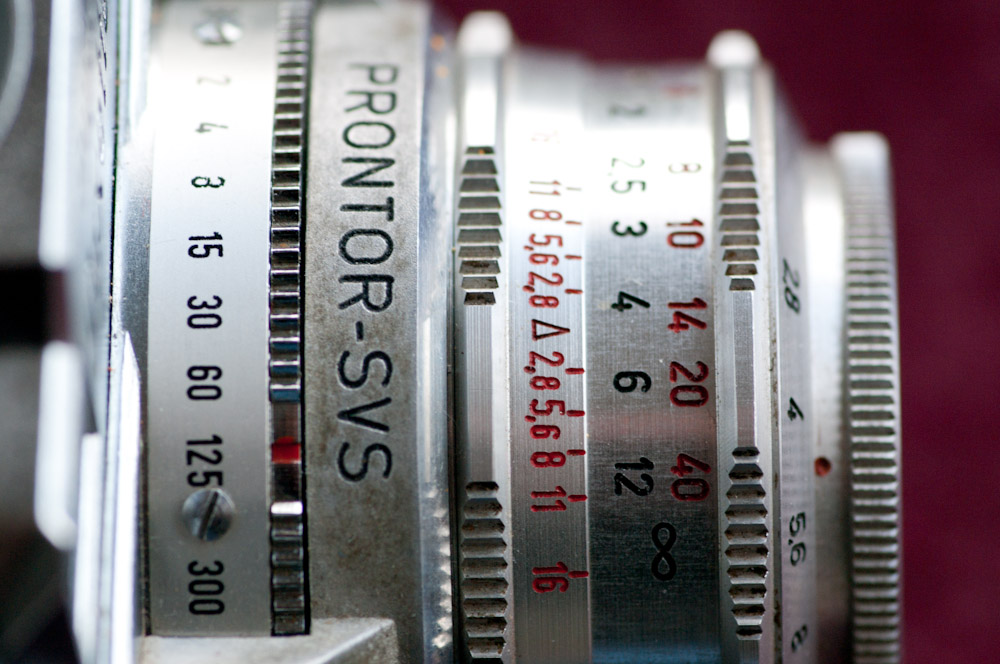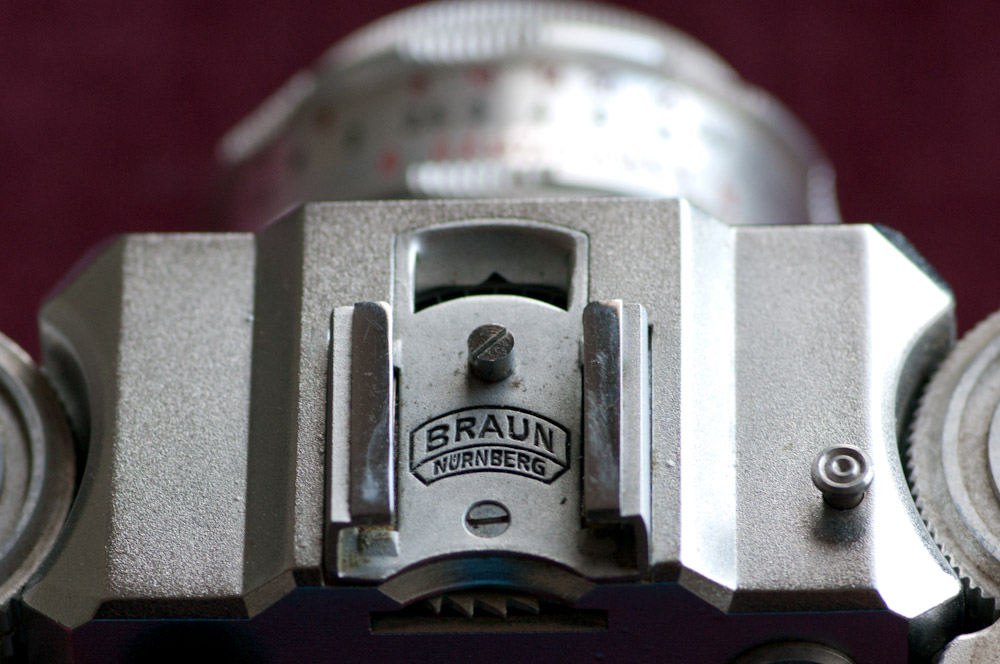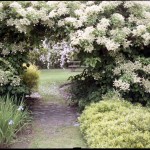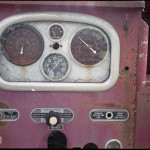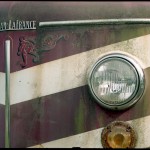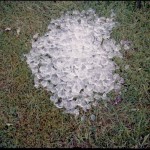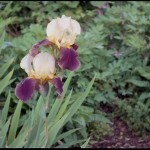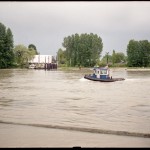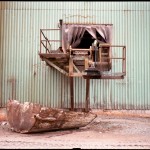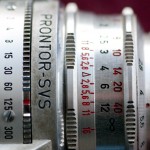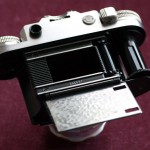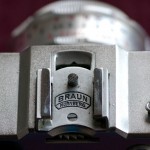The Yellow camera
I have a strong affinity for the colour yellow and thought that I might want to have a camera that colour, you know to blend in. I chose the Pentax 120SW for a couple of reasons: I liked the idea of trying out the 28mm wide end of this camera, It was cheap, It’s a Pentax and Pentax has released yellow camera’s most notably the recent K-01
So once I have my victim camera and paint, I disassembled it and masked off any areas I didn’t want to be yellow. You know areas like the viewfinder.
I just used spray paint from the local hobby store that you would use on a model car or plane or camera or something similar
Then after somewhat careful re-assembly (No extra bits left over)
Are you my mother?
OK so that amused me for a few minutes but did the camera still take pictures? Well yes and no. Yes it still takes pictures but I’ve introduced a small light leak, that could easily be found and fixed but that may not be worth my time or any more film. It’s just not much of a camera to get excited over. Yes the 28mm wide end is an interesting focal length but the Pentax EW24 is wider and ultimately a better camera. So if your wondering did this fix my yellow camera yearning, not in the least I just need to find a better victim.
And now for something completely familiar
#Polaroid a week double shot
This week I’m posting two images at once. A Polaroid Spectra shot and a Fuji FP100C shot taken with a Polaroid 330 Pack film camera.
Yashica 44 35mm conversion rev. 0.9
I picked up this Yashica 44 as is at the Vancouver camera show. The problem with it was that the front of the camera just flopped around. Repairing it turned out to be very easy, it was missing some screws inside and by missing I mean gone, not a trace.
It turns out though that there are some screws that were an exact match inside a broken Pentax Spotmatic that I had. After putting it all back together it was time to break it. Well modify it anyway.
What I did was remove the upper roller and film holder so that I could squeeze a 35mm film canister in there. This is the point where the rev 0.9 comes in. I tested the camera and found a couple of things that didn’t quite work out. The first and most obvious one was that I miscalculated how much to advance the film for each frame. Half a turn is enough near the end of the roll but not at the beginning. The other issue is that the pressure plate that holds the film flat is very reflective. That isn’t a problem for film with a paper backing like this camera originally used but is with transparent film. I think that the light was reflected back through the film which reduced the sharpness and contrast. So to rectify that I will paint it black, I will also replace the dried up faux leather that graced the front of the camera before.
The scanning itself was a problem as the holder that I have obscures the sprocket holes. I placed the film on the Epson V700 glass directly but this is not an ideal situation and results in newton rings and discolouration around the edges. I think I will build a more general purpose film holder that can be adjusted for holding 35mm film from either end at the proper distance from the scanner.
Olympus Trip
The Olympus Trip is a very interesting camera for several reasons. It does not require a battery because it has a selenium meter around the lens that powers all the automatic metering functions. It’s a zone focus camera so you need to estimate the distance to your subject. These two things together make a camera that is very good at being always ready. There is no worrying about exposure, it’s out of your control, and if you pre-focus to a set distance then it’s easy to snap a picture the moment you want without any delays. It’s also relatively small and a nice design that the newer mirror-less Olympus camera’s owe a nod to. It has a 40mm lens that is a nice compromise of a focal length not to wide and not to long, just right. There is a lot of information about this camera if you just ask the the all knowing internet, so I won’t cover that but I just wanted to reiterate how easy it is to use and the results from it can be decent.
Canon BF-10
Will you be my BF forever? Ah 26mm it seems at times I will use almost anything that takes a wide angle shot
“The Prima BF-10 is so compact and lightweight you won’t think twice about taking it with you, whether it’s down to the beach when you’re on holiday, or on a night out in town ”
It’s lightweight alright it’s all plastic even the metal bit’s are really plastic in disguise. There are a few other things to note as well, it has the sort of distortion that would make a hipster blush and despite having some sort of coating on the lens it washes out the image if any stray light reaches the lens. I’m embracing these characteristics and spinning them into a positive because 26mm is such a unique focal length for a point and shoot.
Ricoh FF3
If the 1970’s were all about fixed lens rangefinders then the early 1980s were all about the 35mm auto-focus point and shoot. When I say 35mm I don’t just mean the film size either it was such a common focal length that it seems every camera maker of the day had one. So please forgive me for finding the Ricoh FF-3 to be just another of the many, such as the Yashica T series or the Nikon L35AF, Pentax PC35AF, Canon AF35M, it seems it was best to make sure that people could tell from the name that it was a 35mm lens and had that new fanged auto-focus thing. If anything the Ricoh is physically slightly wider than some of the other equivalent cameras of the day, but that’s not much of a difference.
#Polaroid in pink
Super Paxette (more images)
Here are a few more images from the Braun Super Paxette with the Staeble Kata 45mm f2.8 lens. A lens which seems to be looked down upon by the all knowing internet but I think does alright in most situations.
And finally the end of the roll where the film didn’t advance all the way causing the two frames to join together.
Braun Super Paxette, Real #Photographers don’t crop #film
I love the little fringe the film mask on this camera creates, it makes the image look like a postage stamp. I’m kidding of course about not cropping but I do think it’s important to use as much of the negative as possible and it’s good practice to be aware of everything in the frame. I’ve written about this camera previously, a couple years ago, and that can be found here Super Paxette. I would like to add though how fun this camera is to use and I mean that in comparison to all other cameras not just as a nostalgia thing. It’s diminutive size really lends itself to being carried in the palm of your hand instead of around your neck.
You can see here how the ten curved apperature blades help form a resonably round aperature opening at f5.6
Sitting behind the lens the leaf shutter displayed here helps keep this camera quiet and also, as with all leaf shutters, it produces little to no camera shake. This is because the blades have very little weight and the symmetrical opening and closing cancels out any directional momentum. The top speed of this camera with it’s Prontor-SVS shutter however is limited to 1/300 sec

